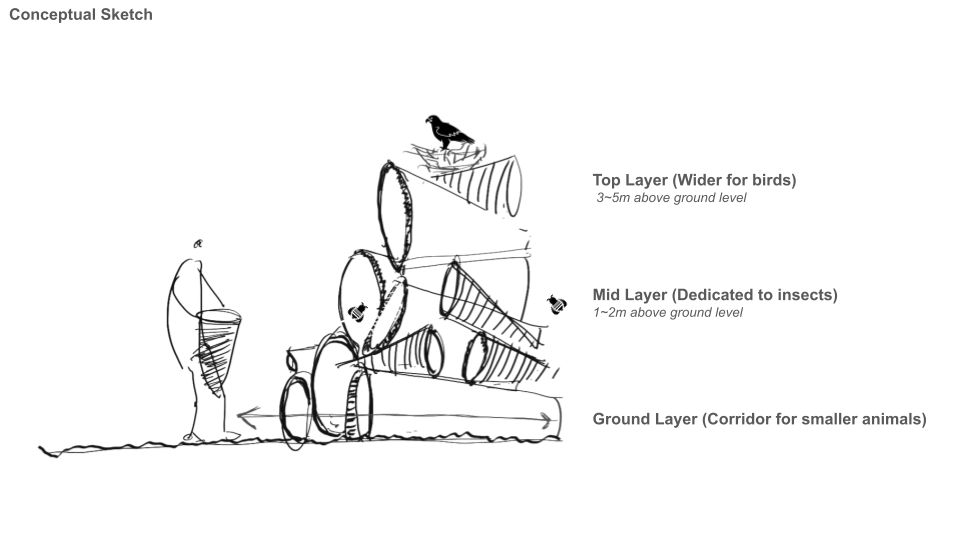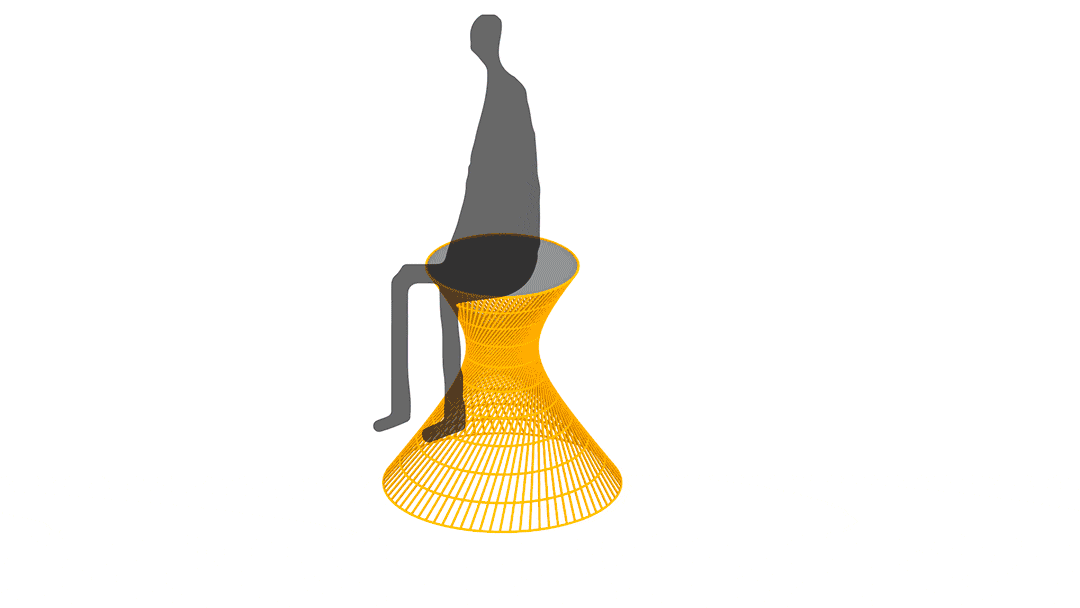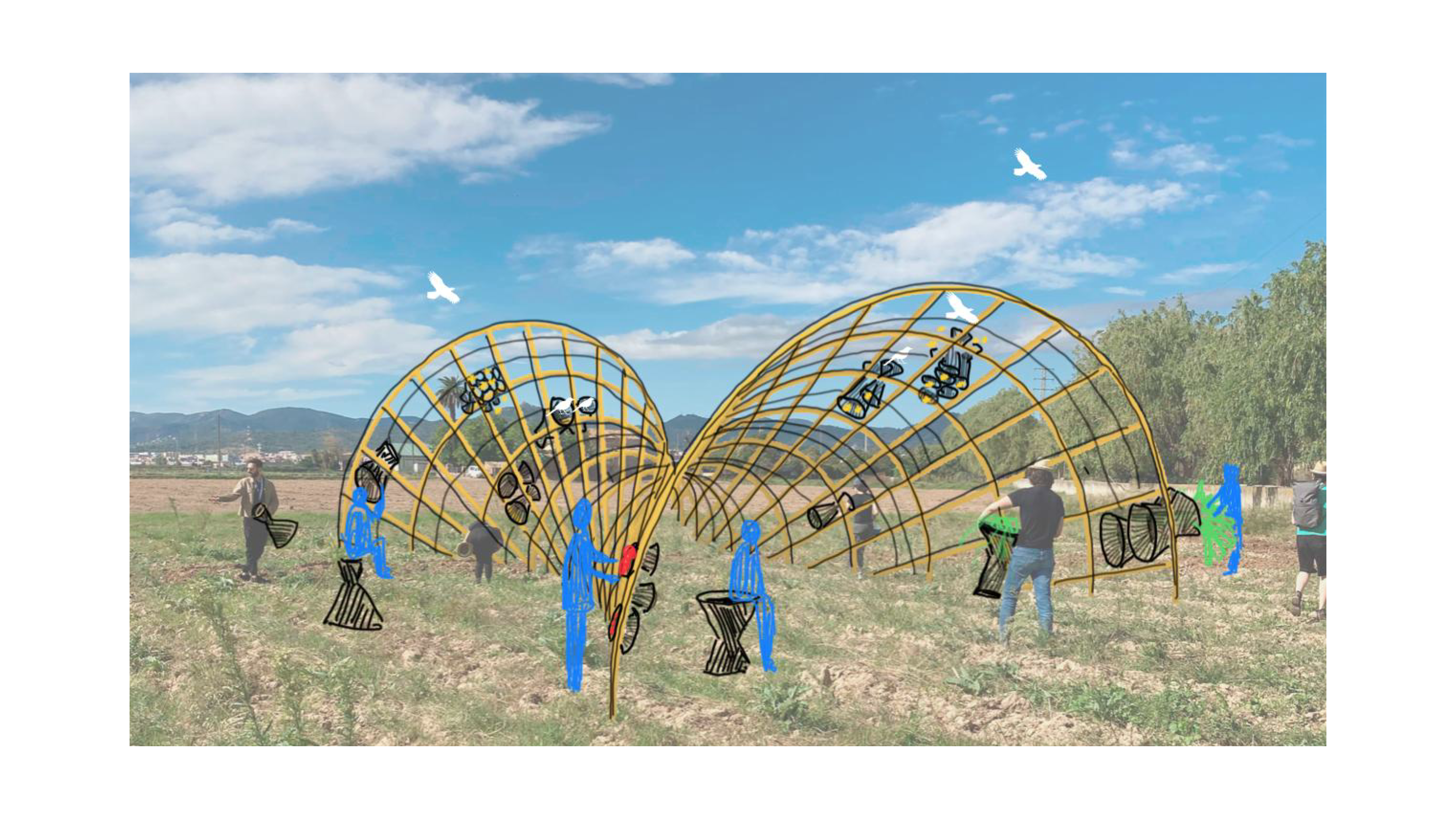Parc Agrari del Baix Llobregat (PABLL) is an agricultural park situated within the metropolitan area of Barcelona, Spain, spanning approximately 3,500 hectares. Around 65% of the area is dedicated to agriculture, while 25% is preserved as natural space. This diverse environment supports a wide range of human stakeholders, including farmers, producers, consumers, and local residents, as well as non-human participants such as fruits, vegetables, birds, bees, butterflies, and over 300 other animal species.
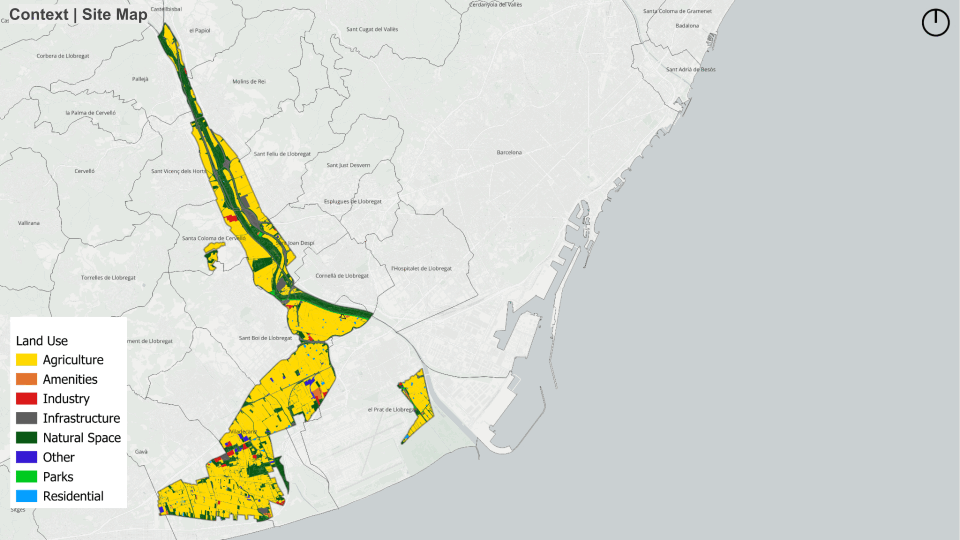
The primary goal of the project was to develop a product that could be used by all stakeholders—both human and non-human—within the PABLL agricultural park, while also embodying the sustainable practices integral to the farmers’ approach. Success was measured by focusing on these key objectives:
- Minimizing harvest waste by repurposing by-products into a fully biodegradable material,
- Designing a versatile structure that can be scaled and adapted to different uses, and
- Creating habitats to support the many species essential to the farming ecosystem
The envisioned product is meant to be highly adaptable—starting as a packaging and display solution for farmers at the market and scaling into a larger installation. It was important to create something that customers could easily associate with the farmers’ brand, while also ensuring that the market display represented and symbolized the broader activities happening on the farm. The goal is for these products showcased at the market to inspire people to visit the farm, despite its location being away from residential areas.
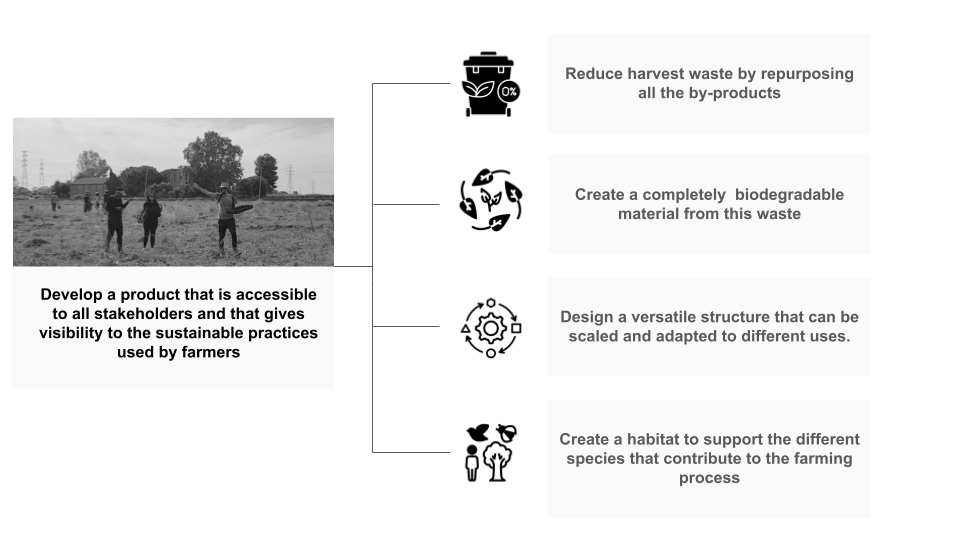
The installation draws inspiration from the geometric DNA of the stakeholders’ habitat, with a lattice grid structure as its core identity.
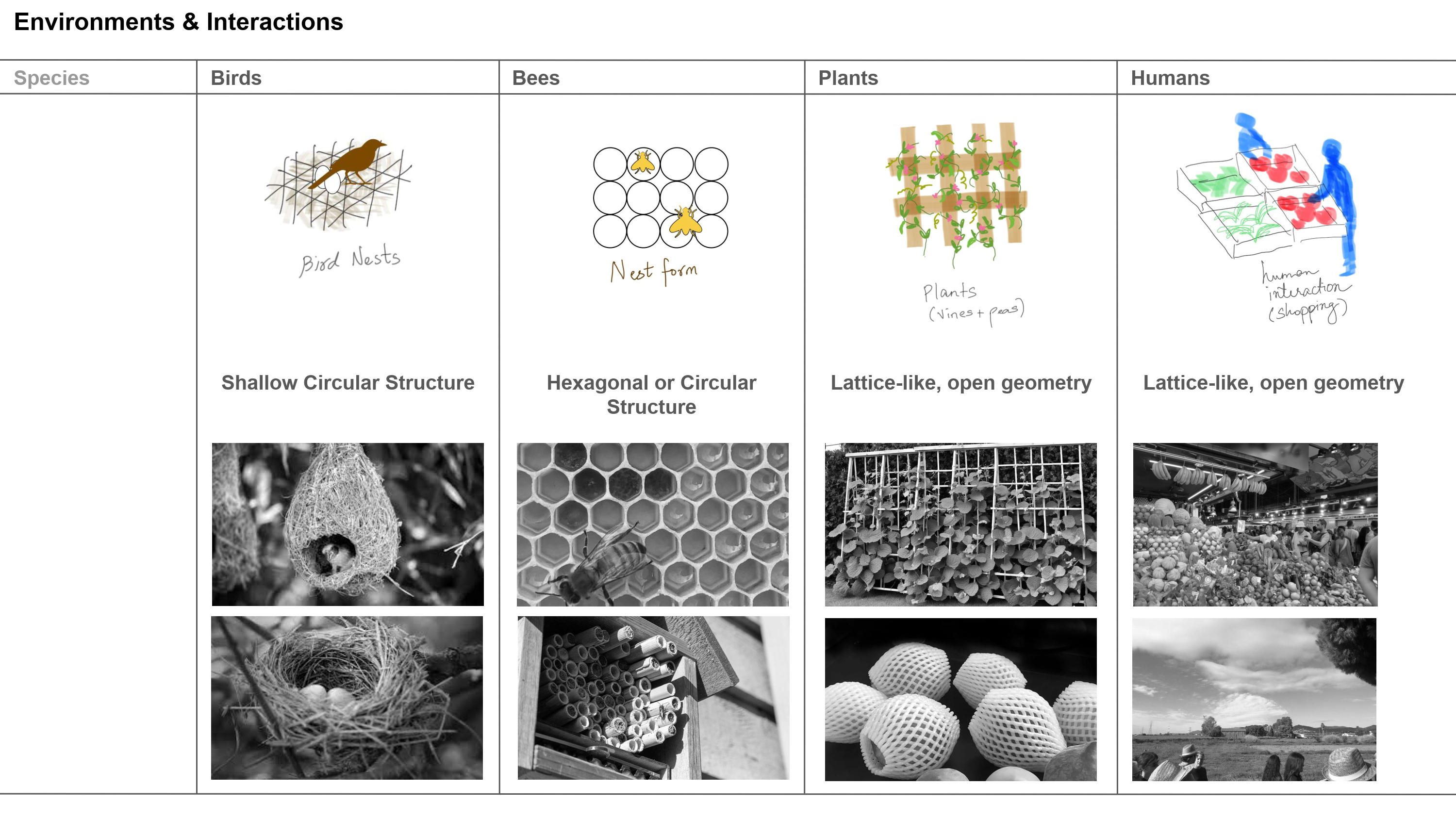
Construction materials are sourced from plant residues cultivated during the soil fallow period, including Barley, Alverja, Broadbean, Mustard, and Rapeseed. Barley, chosen for its high cellulose (40-45%) and hemicellulose (25-30%) content, serves as the main material due to its structural strength. Residues from Alverja and Broadbean, rich in protein, act as a binder, while Mustard and Rapeseed contribute durability and water resistance through their oil content.
The process begins by arranging hay in long, aligned strands to form the central framework. A finely chopped binding mixture of Alverja, Broadbean, Mustard, and Rapeseed residues is then prepared, with the option of adding plant-based resin or starch adhesive for improved cohesion. The hay is coated with this mixture, shaped into rod-like forms, and twisted to create added tension, resulting in rods of varying densities and strengths.
These shaped rods are then dried naturally or with low heat, followed by a curing process for hardening. The final structure, inspired by the Shukhov tower, is assembled to ensure stability while minimizing the need for external reinforcements. The rods are versatile, capable of being crafted into objects as small as cups, beehives, fruit baskets, or chairs, and scaled up to form larger installations, such as pavilions.
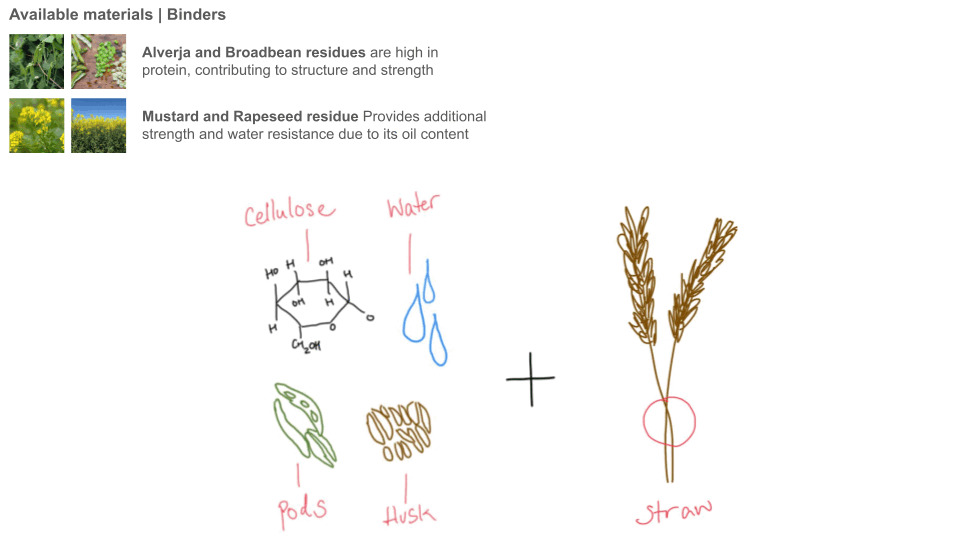
The pavilion design ensures that the ground level is accessible for humans and small animals, the mid-level provides habitats for insects, and the topmost layer is reserved for birds. The scalability of the structure is determined by the availability of materials post-harvest, allowing the final form to evolve organically in line with the viability of agricultural processes.
